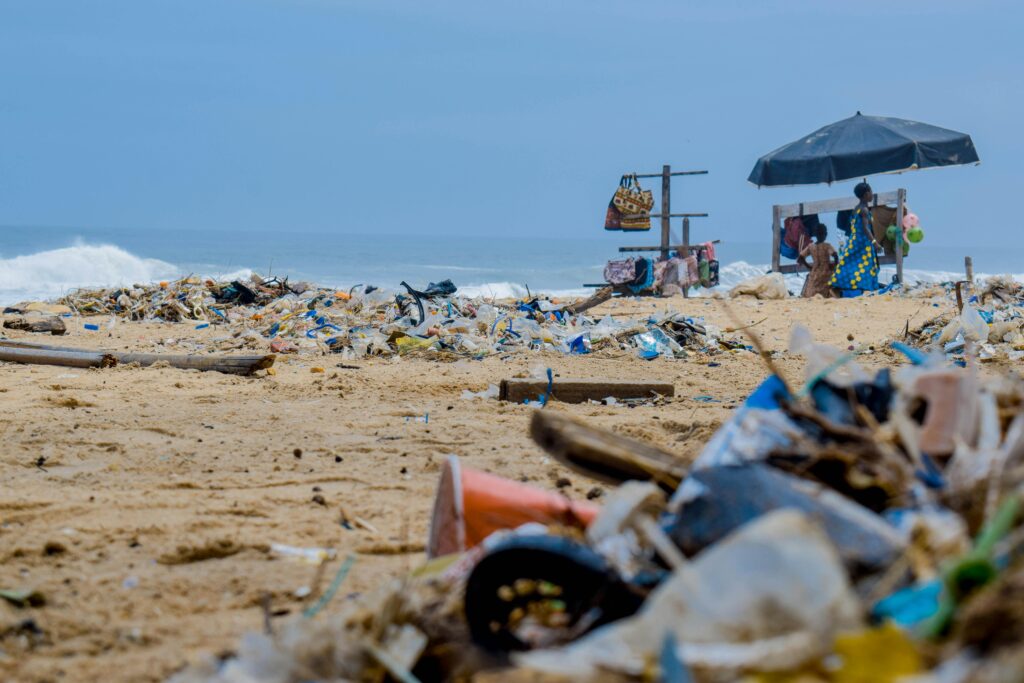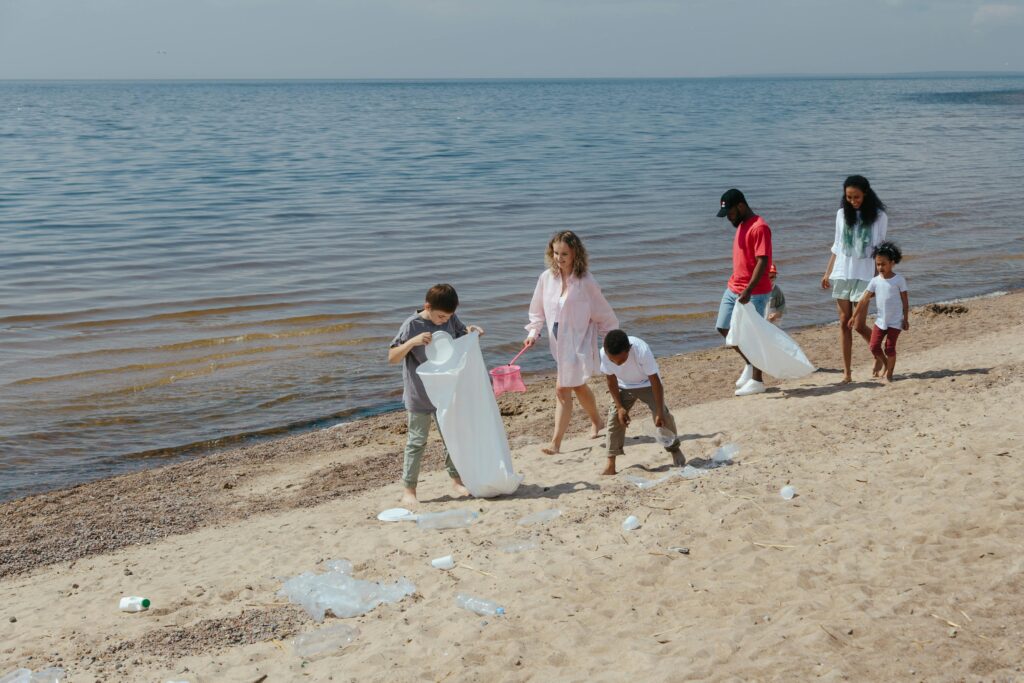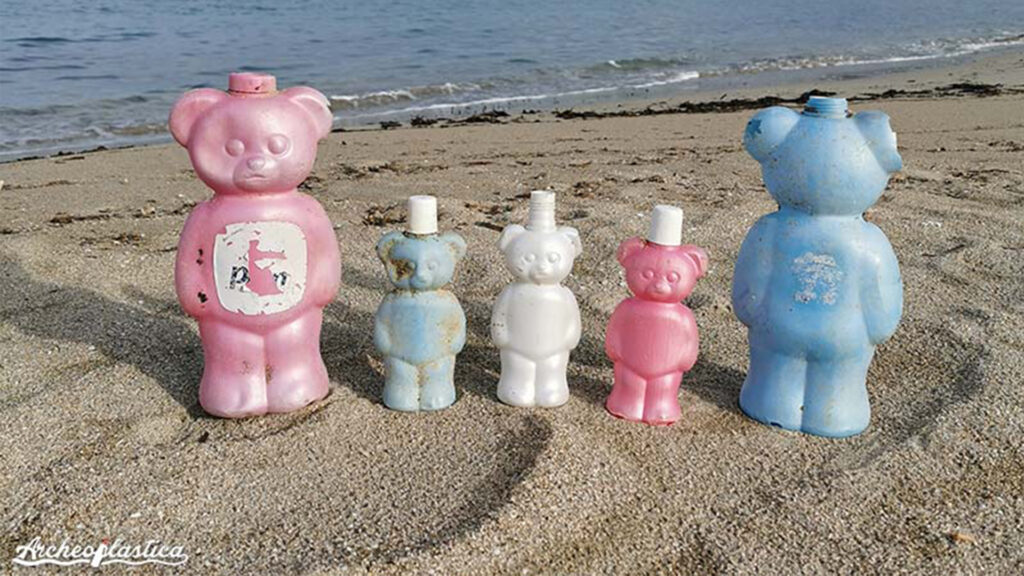Are we living in the age of plastic and not the Anthropocene? It is possible. To avoid the impact of the millions of pieces of waste that the seas receive, there are several noteworthy initiatives.
Each year 450 million tons of plastic are produced, 8 million tons of plastic waste end up in the oceans.
According to the 2016 Ellen MacArthur Foundation report, by 2050 there will be more plastic than water in the oceans.
In 2017 Roland Geyer, a professor of industrial ecology at the Bren School of Environmental Science and Management, University of California, with a team of researchers, wrote a report showing that humanity had produced 8.3 billion tons of plastic since the 1950s. By 2015 only 9 percent had been recycled, 12 percent incinerated and 79 percent had accumulated in landfills or the environment.

The new plastics economy
The numbers listed above cause concern, anxiety, and a sense of helplessness. How to react, what to do?
The innovative proposal to prevent a doomsday scenario from coming true is called a New Plastics Economy by the Ellen MacArthur Foundation and requires changing our approach to this material.
How? By introducing the circular economy into the way we experience plastic, from how we create it, use it and recycle it.
This organization, together with WWF, has created a coalition of more than 200 companies (involved at different levels with plastic), financial institutions and NGOs to call on the United Nations to establish the Global Plastic Treaty.
In March 2022, during the fifth session of the United Nations Environment Assembly (UNEA), a historic resolution was adopted to develop a UN treaty to act on plastic pollution. Formal negotiations began in November 2022 with the convening of an Intergovernmental Negotiating Committee (INC). The hope is to complete negotiations for a UN treaty in November/December 2024, at the fifth INC.
Global volunteer initiatives against the plastic wave
Globally, this new vision has inspired many initiatives to collect, dispose of, and use less plastic.
A strong concentration of collection efforts is in the oceans and beaches, the places most compromised by the plastic waste wave.

The 2023s saw many initiatives appear on the scene, especially to clean up beaches. Many organizations dedicated to preserving the environment have invited volunteers to be part of clean-up days at the beach closest to them. From Legambiente in Italy to Beach Clean in the United Kingdom, there are now many opportunities to take action to reduce the amount of litter found on every beach.
One of the most interesting initiatives that has emerged in this context is Archeoplastica.
Archeoplastica, archaeological finds of our time
In 2018, Enzo Suma, a nature guide from Ostuni, began, with small groups of volunteers belonging to the association “I millenari di Puglia,” to collect trash on Apulian beaches.
As Suma himself recounts, this environmental project soon becomes independent and, thanks also to the popularity it gains on social media, it expands and groups of pickers are formed, distributed throughout the coastal regions of Italy.
While doing this activity, he notices that some of the waste is older than others, some even “ancient,” blatantly abandoned to their fate for decades. In late 2018 he started posting photos of these finds on Facebook, with their stories.
The public reaction is immediate, sparking curiosity or nostalgia, depending on different demographics. On the one hand, one feels the wonder of seeing again objects that belonged to everyday life so many years ago. On the other is the amazement when one realizes how excellent their preservation is, indicating how difficult it is to dispose of the plastic.

Especially considering that most of these items found on beaches were designed as disposable. So used for a few weeks, a few days, or even a few minutes and then thrown away,
Raising people’s awareness of the problem of plastic lost in the sea is precisely one of the goals that prompted him to found Archeoplastica.
Stories from the sea
Now the collection and beach cleanup continues, also receiving finds from volunteers scattered around Italy. In addition to displaying them via social media, there is now a wonderful showcase on their website. This is a virtual museum that allows you to see the objects in 3D, and read about their history and where and by whom they were found.
It is fascinating and troubling to see so many everyday objects in excellent condition. So many are also easily associated with famous advertisements of companies that still exist, such as the Nesquik container or the Yomo yogurt jars. Or, like the 90 World Cup ball, to events of the past that seem so near and remote at the same time.
In addition to the virtual museum, exhibitions have also been launched, “stories from the sea,” whose main objective is to invite reflection, a stimulus toward new, more conscious behavior.
These traveling exhibitions are being hosted in various locations around Italy and with several relevant partners, including National Geographic.
Three exhibitions are currently being held: in Cesenatico (until September 8), in Vieste (until August 18) and in Jesi (until October 27, 2024).
So now what do we do with our plastic?
All of these initiatives are very important in expanding collective awareness of the difficulties of disposing of our daily waste.
Once this awareness is absorbed, however, it is also necessary to implement changes in everyday life.
Lucy Siegle, a British journalist specializing in the environment, decreed in her book “Turning the Tide on Plastic” that we must start by changing the traditional 3Rs of recycling (Reduce, Reuse, Recycle).
These have long been used as slogans for optimal waste disposal, but are no longer enough. It encourages us to add 5 more Rs and thus create an 8-step system: Record, Reduce, Replace, Reject, Reuse, Replenish, Rethink, Recycle.
By recording, and keeping note of what we use daily, we can realize the level of our daily waste. Once we understand our level of waste, we can then proceed with figuring out what can be reduced or replaced with non-plastic alternatives. Or, in other cases such as take-out food, what can be rejected (plastic cutlery/bowls). Other things can be reused and refilled several times (such as water bottles).
On impact, it may seem like a long process, but once started it simplifies life, reducing much waste that we don’t even realize.
Do we want less plastic in our seas? Let’s start reducing plastic in our homes.





